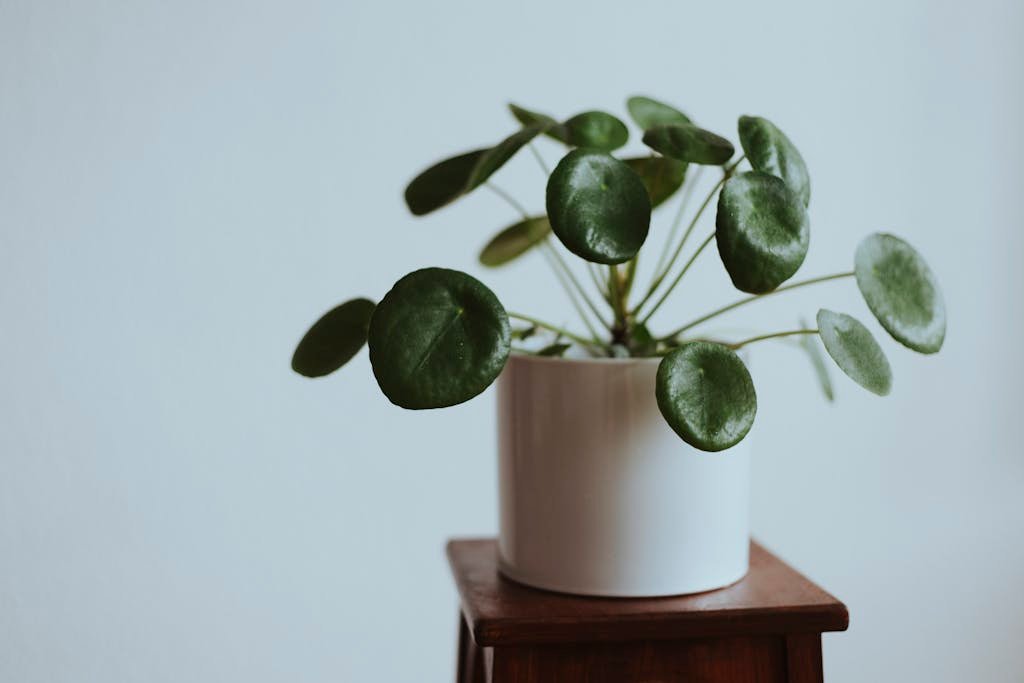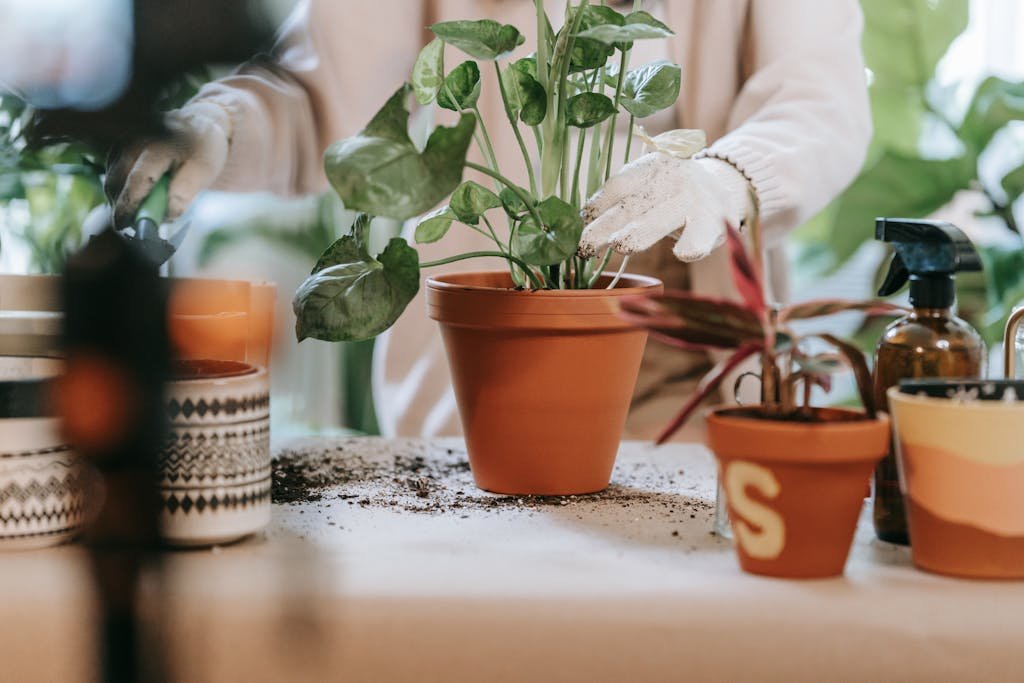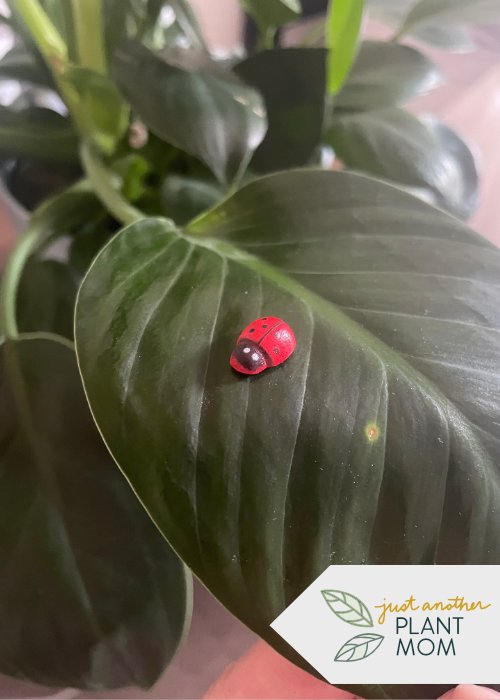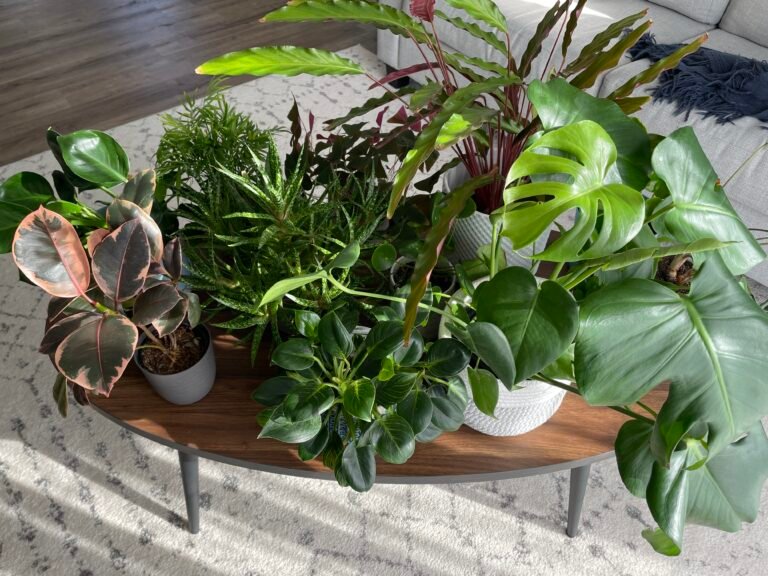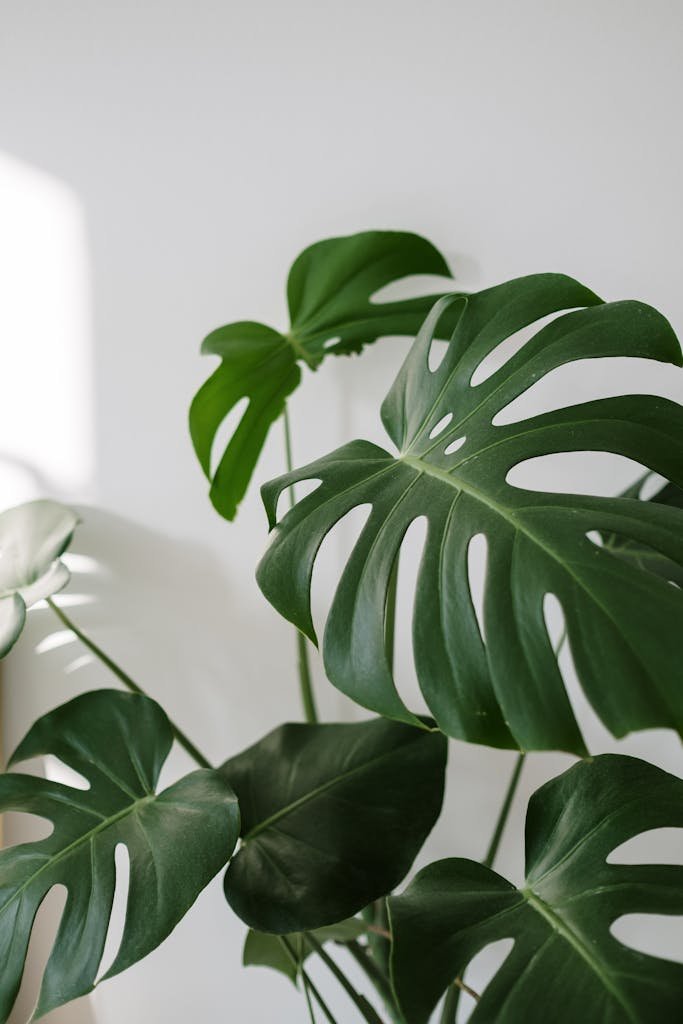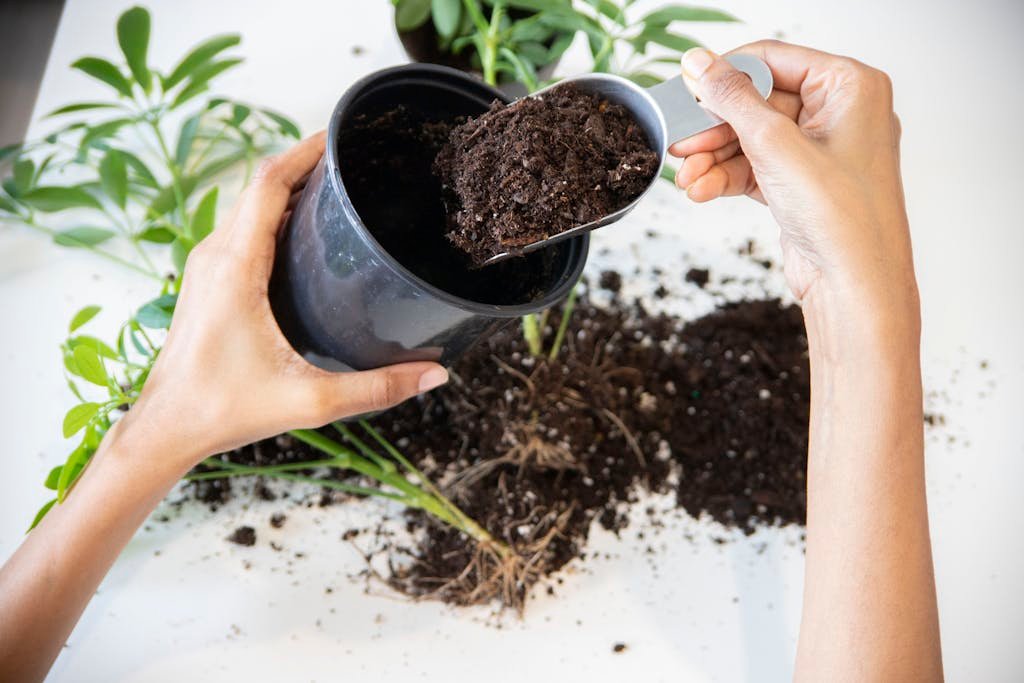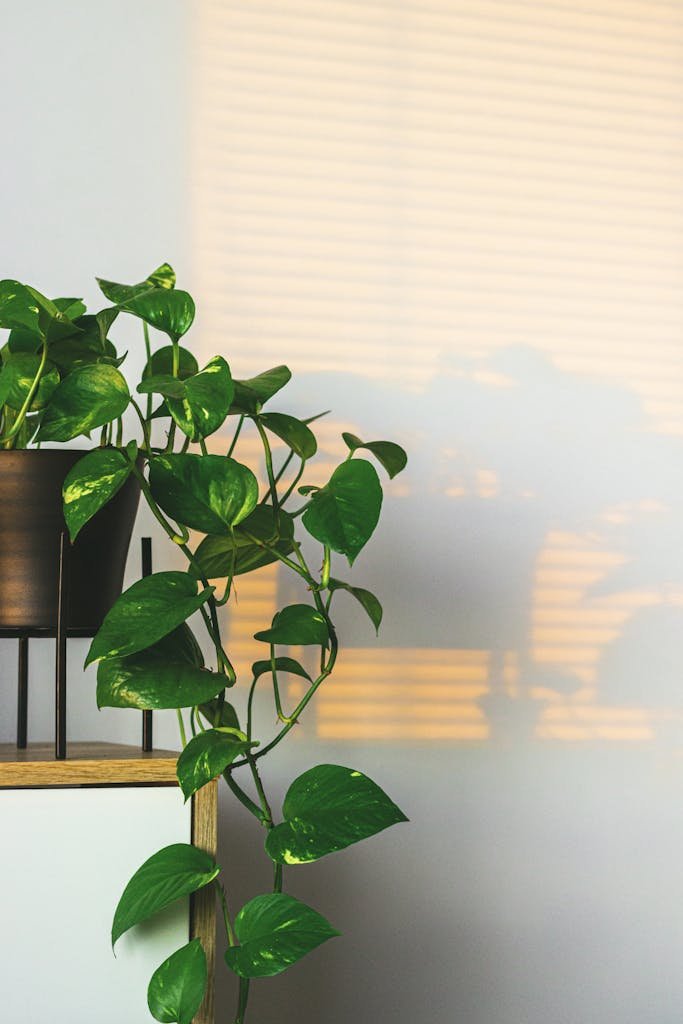The complete guide to caring for your pilea peperomioides (Chinese money plant)
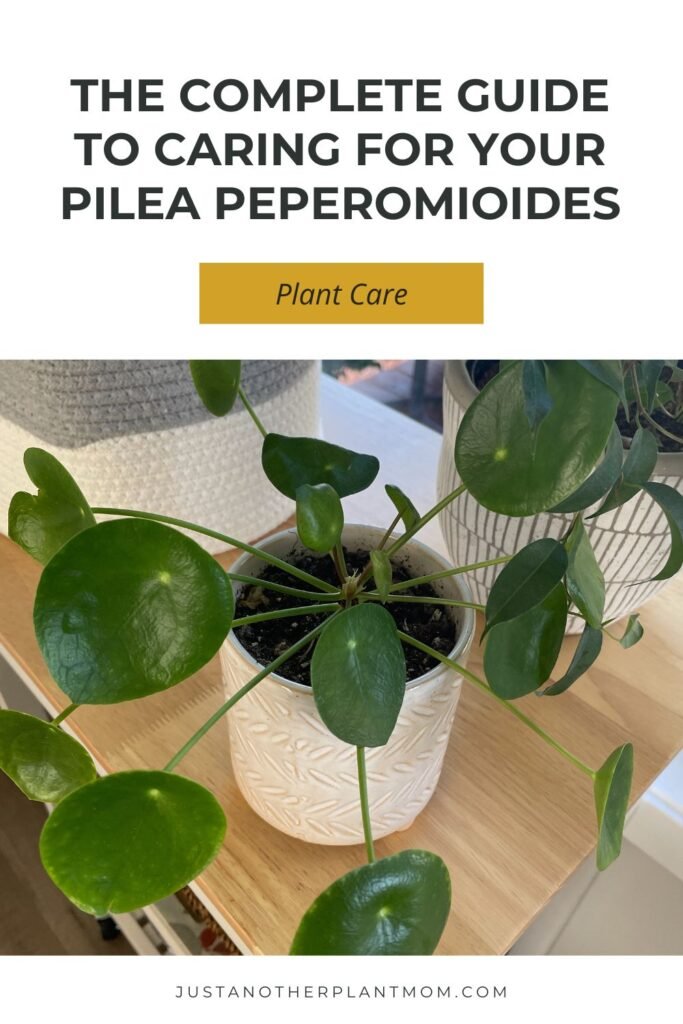
My little pilea peperomioides is definitely a contender for the cutest plant I own! I love its little round leaves and the fact that it’s super easy to care for (something I appreciate as my plant collection grows!)
Originating from southern China and part of the Urticaceae family, the pilea peperomioides (aka Chinese money plant) has become quite popular over the last few years because of it’s aesthetic appearance and easy going vibes. Its round, bright green leaves grow in clusters on long, thin stems. The leaves remind me of little lily pads or coins (which is how it got its nickname). The main stem will thicken over time as the plant grows and it will sometimes lose the bottom leaves, making larger, more mature plants look like mini trees.
This plant thrives in indoor environments, and it’s also really easy to propagate, so it’s a great choice for beginner plant parents!
Note: Pilea peperomioides are non-toxic and pet-safe!
Caring for your pilea peperomioides
Light requirements:
Like many indoor plants, the pilea prefers bright, indirect light. Place it near a window where it can receive plenty of filtered sunlight throughout the day. Just make sure that you don’t expose it to direct sunlight for prolonged periods because this can scorch its leaves. If you find that your pilea is stretching and getting leggy, that’s a good sign that your plant needs more light! It’s also a good idea to regularly rotate your plant to keep it looking nice and full on all sides. (Learn more about light requirements for your plants here!)
Watering requirements:
When it comes to watering your pilea, less is more. Allow the top inch of soil to dry out between waterings before giving it a thorough watering. Keep your pilea in a pot with good drainage so that any excess water can drain away. Overwatering can lead to root rot, so be sure not to let your pilea sit in soggy soil. In the winter months when growth slows down, you can reduce watering frequency if necessary. (Get more tips on how to water your plants here!)
Soil requirements:
Your pilea peperomioides will be happiest in well-draining soil. A high-quality potting mix formulated for indoor plants will work well. You can also add some additional perlite to improve drainage if needed. (I use my typical soil mix of potting soil, perlite and orchid bark.) Repot your pilea every couple of years to refresh the soil and provide it with fresh nutrients. Choose a slightly larger pot if the plant becomes root-bound. Finally, you can also add some houseplant fertilizer (according to package directions) in the spring and summer months.
Temperature and humidity requirements:
Pilea peperomioides thrive in typical indoor temperatures ranging from 65°F to 75°F (18°C to 24°C). It can tolerate slightly cooler temperatures, but avoid exposing it to drafts or sudden temperature fluctuations. As for humidity, the pilea is adaptable and can tolerate a wide range of humidity levels, but it appreciates slightly higher humidity, especially during the winter months when indoor air tends to be drier.
Troubleshooting common issues
- Yellowing leaves: This can be a sign of overwatering, underwatering, or too much direct sunlight. Adjust your watering schedule and move your pilea to a location with more indirect light if necessary. Because there are so many potential causes to yellow leaves, I wrote a whole blog post about it!
- Wilting or drooping leaves: This is often a sign of underwatering. Give your plant a thorough watering and adjust your watering routine if necessary.
- Brown tips on leaves: This can indicate low humidity or overfertilization. Increase humidity by placing a tray of water near your plant or using a humidifier. If you suspect overfertilization, flush the soil with water to remove excess salts. When you fertilize your plant, it’s a good idea to dilute it even more than what’s recommended on the label just to be safe.
- Pests: While Pilea peperomioides is relatively resistant to pests, it can occasionally attract spider mites, fungus gnats or mealybugs. Inspect your plant regularly and if you find anything, isolate your plant and treat it with insecticidal soap or neem oil.
Propagating your pilea peperomioides
One thing I love about pilea plants are the offshoots that it creates. Baby pilea plants are the absolute cutest!! Separating out the baby plants is the easiest way to propagate pileas!
Offsets:
Mature pilea peperomioides produce small offsets or “pups” (aka baby plants) around its base as it grows. You can simply detach these offsets from the parent plant and plant them in their own pots to make a brand new plant. The easiest way to do this is to remove the mother plant from her pot so that you can see the roots. Then, gently separate the baby plant from the mother. Finally, place the mother plant back in her pot and the baby in it’s own small pot. Be sure to keep the soil moist and provide indirect light for your pilea pups!
Fun facts about pilea peperomioides
Feng Shui:
Similar to the pothos plant, pilea peperomioides is believed to bring good luck and prosperity according to feng shui principles. Placing a pilea in the wealth corner of your home is said to attract abundance and financial success. Any excuse to get another pilea sounds good to me!
Conclusion
There’s nothing cuter than the pilea peperomioides (IMHO!) and the fact that they are so easy to care for makes them the perfect choice for any plant parent. Do you own a pilea? Or is it on your wish list? Let me know in the comments!
